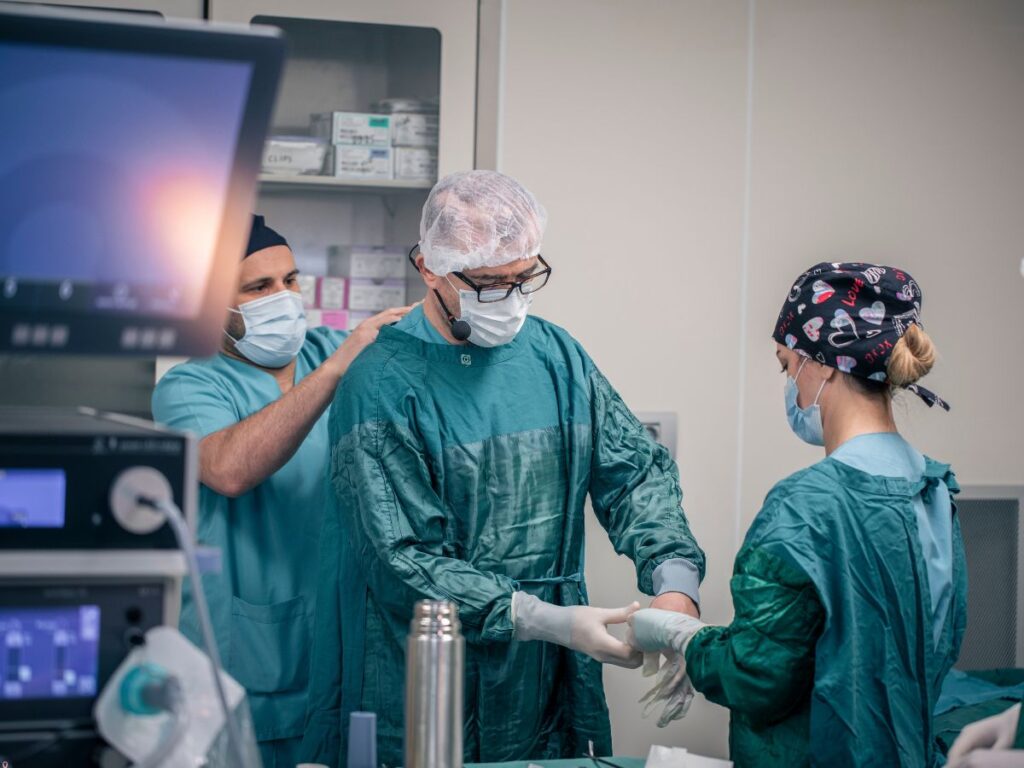Why Meniscus Repair Demands Dedicated Rehab
A torn meniscus—cartilage cushioning the knee—often requires surgical repair or partial removal, relieving joint catching or pain. Yet the procedure alone doesn’t guarantee the knee’s smooth function. Post-surgical rehab guides you toward safe weight-bearing, reestablishing strength in surrounding muscles, and preventing scar tissue from binding the healing cartilage. Without it, the knee might remain stiff, leading to altered gait and ongoing discomfort. By systematically progressing from gentle range-of-motion tasks to dynamic drills, rehab ensures the meniscus heals with balanced support, letting you walk, squat, or pivot without the recurring twinges that once hampered daily life or athletic pursuits.
Common Post-Meniscus Surgery Struggles
In early stages, swelling and surgical incisions limit knee bending, fueling protective muscle guarding. Partial weight-bearing guidelines might confuse patients unused to sharing load properly across both legs. Scar tissue can lock the knee if not regularly mobilized. Meanwhile, quads and hamstrings may have weakened from preoperative inactivity or the trauma that caused the tear. Post-surgical therapy counters these pitfalls: controlling inflammation, gently loading the joint in stable positions, and incrementally awakening muscle fibers that stabilize the knee. Over time, this methodical approach preserves meniscal integrity, fostering the knee’s return to comfortable flexion and extension.
Key Phases of Meniscus Rehab
Rehabilitation typically unfolds in distinct stages:
- Inflammation Control and ROM: Early icing, compression, and passive or active-assisted bending to thwart excessive swelling and maintain basic motion.
- Progressive Strengthening: Low-impact drills like mini squats, seated leg extensions, or closed-chain exercises reengage quads and hamstrings.
- Balance and Stability: Single-leg stands and mild proprioceptive activities refine knee control, preventing re-injury.
- Sport-Specific or Advanced Activities: Gradual introduction of lateral movements or moderate pivots for those returning to running, jumping, or sports.
- Maintenance and Return to Full Function: Ongoing workouts ensure the meniscus and joint mechanics remain stable under daily or athletic loads.
Each step fosters safe tissue healing, optimizing the meniscus’s shock absorption role and halting new micro-tears before they escalate.
Dr. Elham’s Holistic View
Meniscus repair outcomes hinge on synergy throughout the leg chain, from the pelvis down to the feet. Dr. Elham checks the hip alignment, pelvis tilt, or ankle pronation that might shift stress onto the knee. Gentle chiropractic manipulations or manual therapy can unbind tension in the lower back or hips, enhancing the knee’s capacity to load evenly. If tight IT bands hamper lateral knee stability, he advises targeted stretches or massage. This comprehensive vantage point ensures the meniscus isn’t overloaded by hidden subluxations, so the repaired cartilage thrives amid balanced joint motion rather than succumbing to repeated strain.
Why Rehab Pays Dividends
Meniscus recovery thrives under structured therapy:
- Safeguarded Healing: Incremental exercises let new cartilage attachments mend without abrupt load spikes.
- Reduced Scar Tissue: Controlled motion prevents internal scarring from limiting knee bending or twisting.
- Stronger Support Muscles: Rebuilt quads, hamstrings, and glutes stabilize the knee, reducing repeated cartilage strain.
- Smoother Return to Activity: Balanced gait and confidence in pivoting eliminate fear of re-tears.
- Less Future Degeneration: Proper alignment and muscle synergy preserve joint surfaces from uneven friction.
Ultimately, robust post-surgical rehab transforms a once-compromised knee into a dependable, flexible joint, sparing you chronic limp or recurring cartilage damage.
Preserving Gains After Sessions
Between therapy visits, Dr. Elham or the rehab team typically prescribe home routines—like stationary cycling with minimal resistance or mini squats—to maintain knee mobility. Moderating intense activities, especially pivot-heavy sports, prevents re-aggravating the repair until tissues mature. Icing after workouts can calm residual inflammation. Wearing supportive footwear or using a brace if advised ensures knee alignment in daily tasks. By diligently following these steps, you reinforce each clinic-based gain, propelling the meniscus through its crucial healing windows and avoiding abrupt stress that undermines the surgical repair.
Reclaiming Activity Post-Meniscus Surgery
Shortly after surgery, even mild weight-bearing or bending can feel intimidating. Rehab helps you master partial squats, step-ups, or controlled lunges that restore knee function methodically. Dr. Elham’s posture checks confirm the spine and hips aren’t skewing knee angles. As the meniscus solidifies, advanced tasks—like slow jogging or mild agility moves—gradually reintroduce higher impact. Over repeated sessions, the knee reacquires full range and coordination, banishing the fear of cartilage catching or locking during routine errands, hikes, or moderate sports. This renewed freedom fosters a sense of normalcy absent the persistent ache or instability of a pre-surgery meniscus tear.
Risks of Skipping or Rushing Rehab
Failing to adhere to post-surgical guidelines can tear delicate cartilage sutures or spawn excessive scar tissue. Weak muscles might force the knee joint to move oddly, re-injuring the mending meniscus. Chronic swelling or pain could plague the knee if fluid build-up and tension remain uncontrolled. In some cases, incomplete rehab invites future tears or degenerative arthritis down the line. By diligently embracing therapy’s incremental steps, you safeguard the surgeon’s work, accelerating your timeline to comfortable, stable knee motion that resists new strains, letting you enjoy daily life or moderate exercise without the ghost of meniscus trouble lurking.
Session Flow in Meniscus Rehab
Early on, the therapist checks your healing incision, swelling status, and baseline mobility. You’ll begin gentle passive or active-assisted knee bends to deter stiffness. Weight-bearing might progress from partial to full, gradually layering in closed-chain moves—like mini squats or step drills. Dr. Elham might address hip or ankle alignment if they hamper symmetrical loading. As weeks pass, exercises incorporate balance boards, light resistance band work, and eventually, moderate steps or low-impact agility. Once the knee reliably handles these tasks without swelling, more advanced or sport-specific drills confirm readiness for returning to prior activity levels.
A Stronger Knee Beyond Surgery
Rehab after meniscus repair cements the repaired cartilage’s place in your knee’s architecture, forging stability, proper load distribution, and smooth motion. Each phase—swelling control, progressive strengthening, posture alignment—coalesces to guard the meniscus from re-tears or chronic irritation. Dr. Elham’s integrative approach further ensures no hidden misalignments sabotage that healing. Over a few months, you’ll see your knee evolve from cautious stepping to confident striding or, if desired, returning to light athletics. Freed from the nagging catch or pain of a torn meniscus, you’ll rediscover the natural ease of walking, squatting, or mild running, safe in the knowledge that your knee is structurally and functionally sound.






